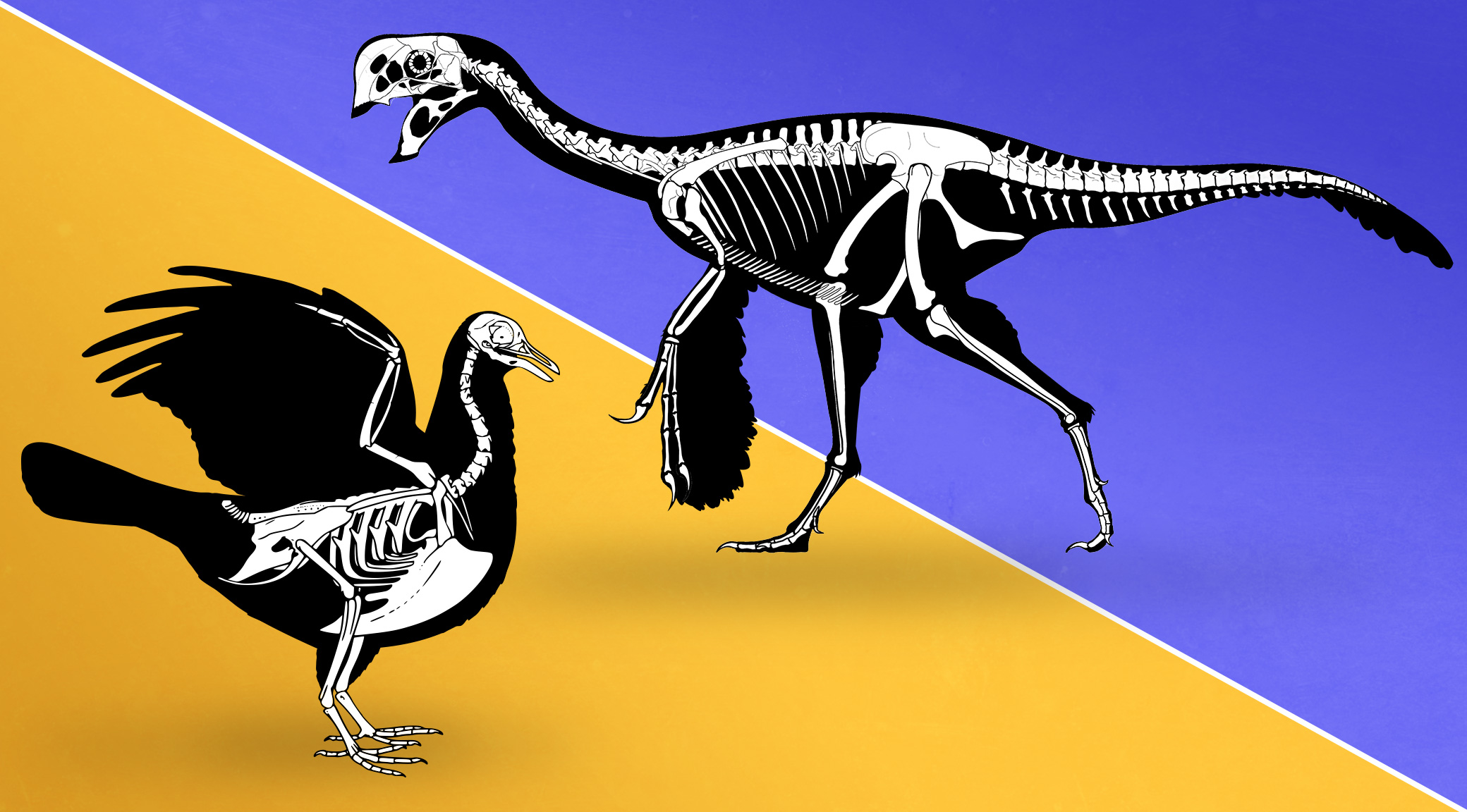Pubis
Wrist
Tail
Hollow bones
Beak
Posture
Scientists know that dinosaurs walked in an upright posture. This means their legs were under their bodies, not sticking out to the side like a crocodile’s. Birds also walk in an upright stance.
Illustration/animation: Chris Edser
Wing
The bones and muscles in the arms and chest of birds and theropod dinosaurs are very similar. Theropod dinosaurs could move their arms in the up and down motion that allows a bird to flap its wings.
Clockwise from top left: Flamingo, Wedgetailed Eagle (Bunjil), Hornbill, Macaw, Peacock. Illustration/animation: Chris Edser

















